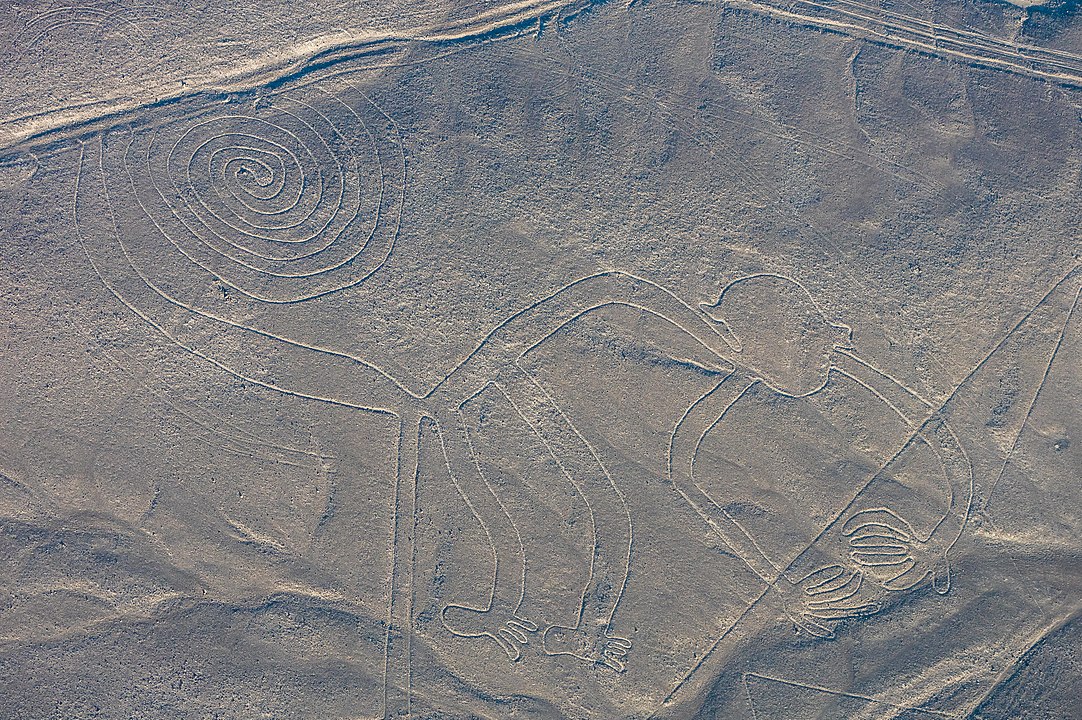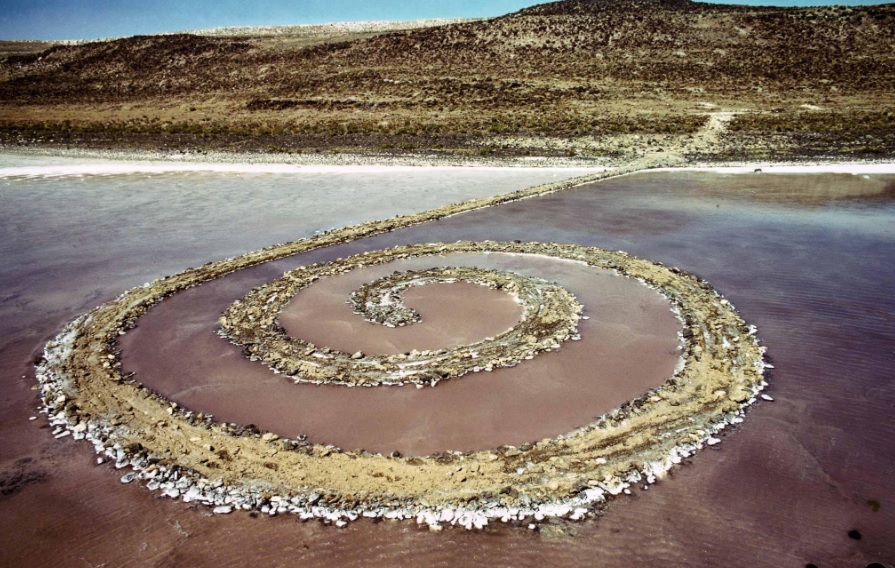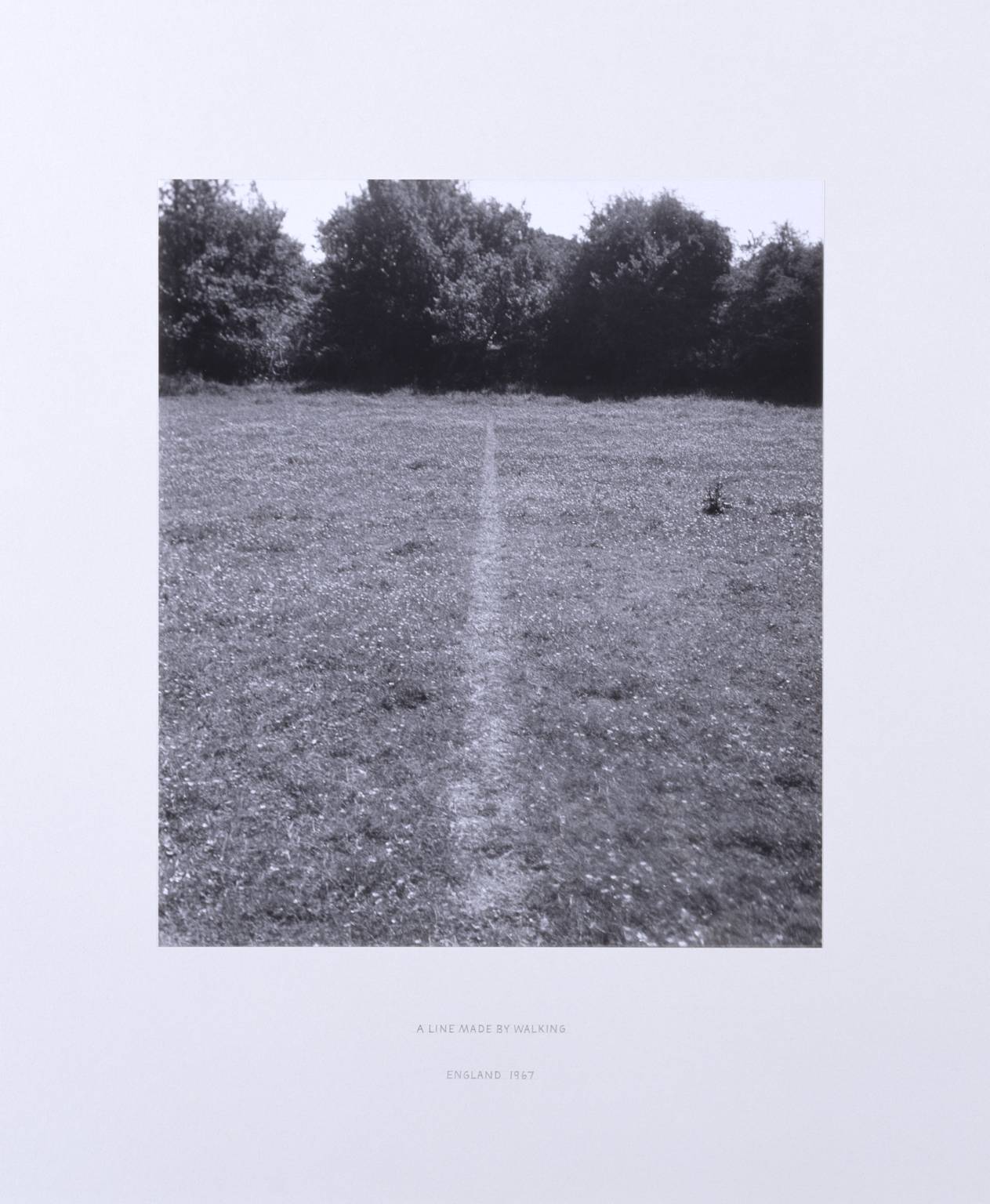Earth art (also known as Land art) is art made in the natural landscape. For example, making structures in the landscape using natural materials, such as stones, soil, grass, or algae.
Earth art belongs to the conceptual art movement that emerged in the 1960s and 1970s. Previously, people tend to think artworks should be mounted in the indoor venue, such as the museum, galleries, or our home. Although there were some outside artworks, ”they were still framed, bolted to a pedestal or concrete slab, perched next to a building, or inside manicured sculpture park drafting”. All of them divide art objects from their environment. Earth art made a breakthrough by making art directly in the landscape.

The Nazca Lines. By Diego Delso, CC BY-SA 4.0, https://commons.wikimedia.org/
Earth artists were inspired by prehistoric artworks that made dramatic marks on the landscape, such as Stonehenge and Nazca Lines (very large geoglyphs made in the soil of the Nazca Desert).

Robert Smithson, Spiral Jetty, 1970, Great Salt Lake, Utah. Dia Art Foundation.© Holt/Smithson Foundation and Dia Art Foundation, licensed by VAGA at ARS, New York. https://holtsmithsonfoundation.org/spiral-jetty
One of the prominent earth arts is Robert Smithson’s Spiral Jetty (1970). Smithson made a giant spiral that had 1,500 feet long and 15 feet wide, in the northeastern part of Utah’s Great Salt Lake. It was built from 6,000 tons of stones, algae, and other organic materials. Spiral Jetty is so remarkable. It has submerged because of the raising of water level in 1972, but thirty years later, the lake’s water levels became lower and Smithson’s work reappeared as the basalt rock covered by white salt. It indicates how the artwork adapts to the natural processes.

Richard Long, A Line Made by Walking, 1967, © Richard Long and TATE. https://www.tate.org.uk/
Another earth artist made marks on the earth by walking. He was Richard Long, a student in London who walked back and forth across the same path in Wiltshire (1967). A Line Made By Walking emphasized simple, minimal, and temporary intervention on the site to make an earth artwork.
Up to now, earth art is still inspirational to us. It reminds us of the tight relationship between human and nature, also makes us realize more the beauty and the power of nature all at once.
The Case for Land Art | The Art Assignment | PBS Digital Studios
